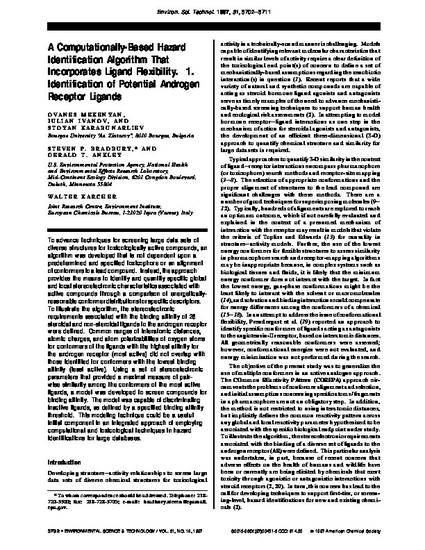
To advance techniques for screening large data sets of diverse structures for toxicologically active compounds, an algorithm was developed that is not dependent upon a predetermined and specified toxicophore or an alignment of conformers to a lead compound. Instead, the approach provides the means to identify and quantify specific global and local stereoelectronic characteristics associated with active compounds through a comparison of energeticallyreasonable conformer distributions for specific descriptors. To illustrate the algorithm, the stereoelectronic requirements associated with the binding affinity of 28 steroidal and non-steroidal ligands to the androgen receptor were defined. Common ranges of interatomic distances, atomic charges, and atom polarizabilities of oxygen atoms for conformers of the ligands with the highest affinity for the androgen receptor (most active) did not overlap with those identified for conformers with the lowest binding affinity (least active). Using a set of stereoelectronic parameters that provided a maximal measure of pairwise similarity among the conformers of the most active ligands, a model was developed to screen compounds for binding affinity. The model was capable of discriminating inactive ligands, as defined by a specified binding affinity threshold. This modeling technique could be a useful initial component in an integrated approach of employing computational and toxicological techniques in hazard identifications for large databases.
- toxicologically active compounds,
- stereoelectronic characteristics,
- binding affinity threshold
Available at: http://works.bepress.com/steven_bradbury/24/
